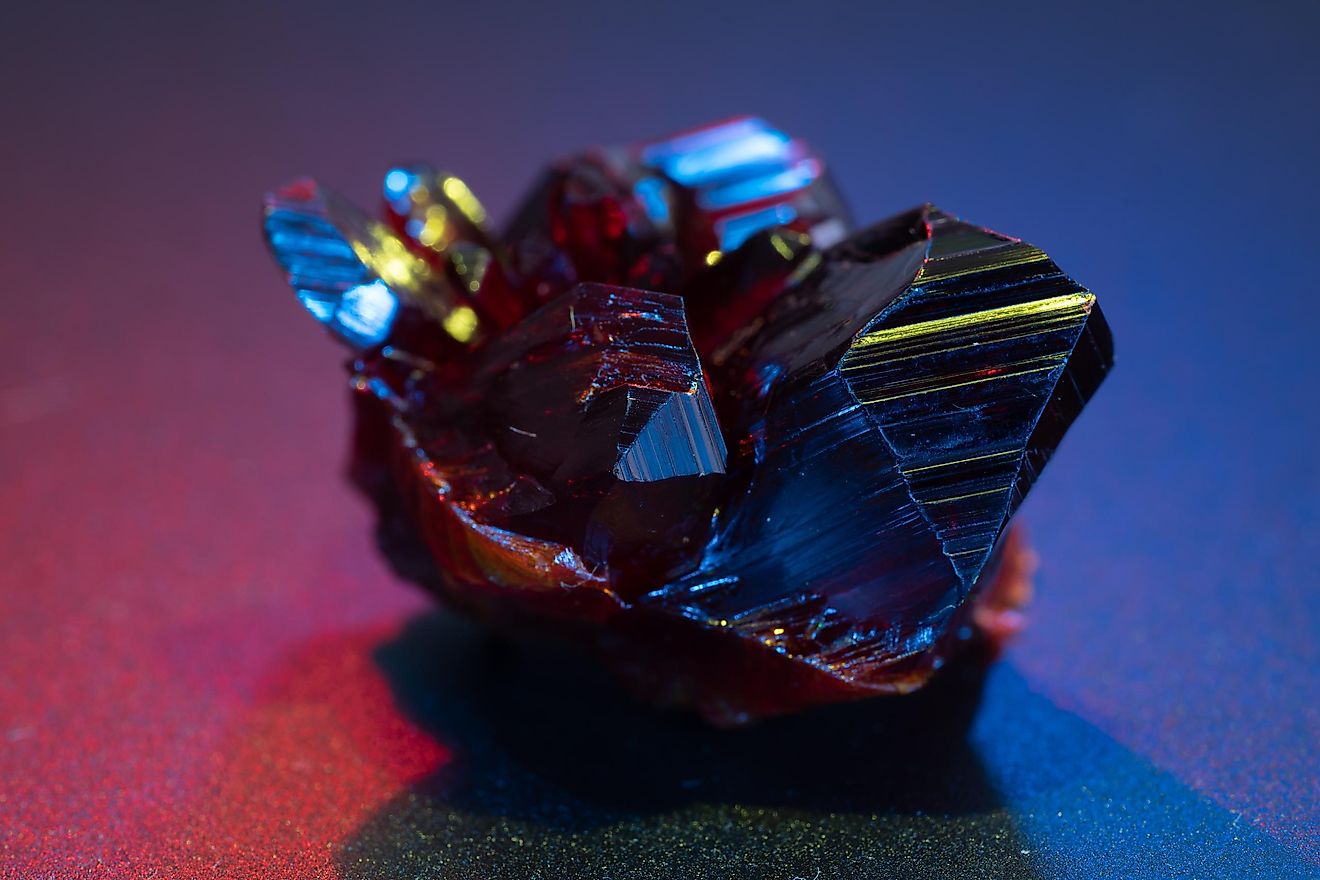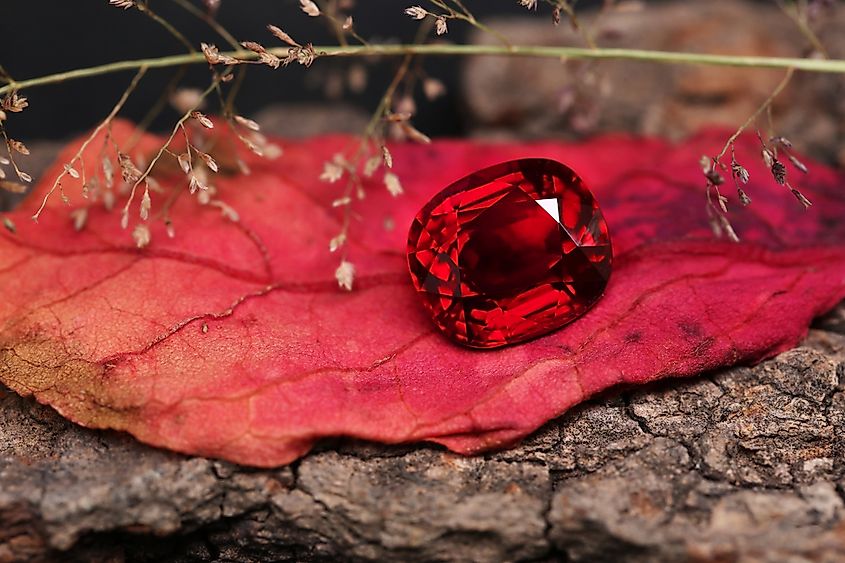July Birthstone: Ruby

In the past, all blood-red transparent gemstones were indiscriminately called carbuncles. As we learned to identify stones by more than their looks, scientists began to separate rubies, garnets, spinels, and other red colored stones.
Red stones have always attracted a lot of superstition and lore, mainly due to their association with blood, power, survival, and life. Worn as a talisman or kept in the house, Ruby was said to protect the owner from any possible danger. Ancient Burmese believed that inserting rubies in their flesh would protect them from being wounded in battle. Rubies were supposed to have some pragmatic “properties,” too: they were said to help in accumulating authority and wealth, especially acquiring more gems.
What Are The Properties Of A Ruby?
Ruby is a red or pink variety of the mineral Corundum. These stones are significantly rarer than diamonds: rubies are prone to inclusions, so clear stones are scarce.
This mineral has a hardness second to diamond, and no cleavage, which makes it a sturdy and enduring gem, perfectly suitable for any jewelry. Size, clarity, and richness of color would determine the ruby value. Sometimes, rubies can exhibit “star” effects, which adds to the rarity, although these stones sacrifice clarity.
What Is The Cost Of Rubies?
Top-color Rubies are so rare that there is no standard, and the prices are determined during an auction. Most recently, a top-color 25.59-carat ruby was sold for over $1,000,000 per carat.
Clear and good-colored Rubies under 1 carat can fetch $10,000-$18,000 per carat; large stones’ value would also be impacted by rarity. Treatment is also a factor in the price because it is challenging to find untreated rubies.
Where To Get The Best Ruby?
Although Asia has always been the primary source of rubies, they can also be found in the US, Australia, and Mozambique, Africa (a young source only discovered in 2009). Rubies from different origins are quite distinct and vary in value.

Thai and Cambodian rubies are often too dark, almost black, and have to be cut to maximize light exposure to reveal some red. Stones from Myanmar generally get the highest prices due to their perfect purplish-red coloring balancing dark tones and vivid saturation known as “pigeon’s blood red.” These stones are easily identifiable thanks to their strong red fluorescence. Some of the other world’s best rubies come from Sri Lanka.
What Are Some Famous Rubies?
Some rare large rubies include 100-carats De Long star ruby (American Museum of Natural History in New York); 690 grams Myanmar ruby crystal (British Museum of Natural History), 138.7-carat Rosser Reeves red star ruby from Sri Lanka, 50.3-carat violet-red star ruby from Sri Lanka (Smithsonian Institution).
How Can I Tell A Treated Ruby From A Fully Natural One?
Same as Sapphires, Rubies are subjected to more treatments than almost any other gem. Unless the seller states explicitly “untreated,” you can expect the default heat treatment. For all types of Corundum, heat treatment is often conducted right at the mine to improve clarity and color. In clear stones, this treatment is undetectable. Heating, if disclosed, does not significantly affect the value of the Ruby.
Some other types of treatments, however, are considered much more intrusive and would impact the value significantly.
Here are the main types of treatments and methods of detecting them:
- Diffusion can improve color and asterism so it is mostly used for star rubies to adjust the effect. This treatment can be detected by immersion or by using magnifying tools, and it is, in general, quite stable.
- The coating is used to enhance the color. This treatment is considered “cheap” and would never be done to truly valuable stones, as well as stones sold to experts as this treatment does not stand to scrutiny. It is detectable with magnification and by rubbing the surface.
- Flux fracture healing is used to repair fractures. The flux is easily detectable with magnification, so the treatment should be disclosed. Typically, this treatment is stable, so it is common for lower quality rubies.
- Various fillers are used to hide fractures and improve color. These are treatments that decrease the stone’s value, and they must be disclosed; if not, it is considered malpractice. Immersion and magnification are common ways to identify a treated stone.
- Lead glass filling must be disclosed because lead glass is not as resilient to heating and can leak out if the stone is reheated during repair or setting. Detectable with immersion.
How To Tell If A Ruby Is Fake Or Real?
Modern synthetic rubies are extremely difficult to distinguish from the natural ones, so only the top experts can do it. There are several techniques used to manufacture rubies, including flame fusion, the Czochralski process, flux, and hydrothermal method. The color and inclusions look natural because most of these processes simulate the conditions of the natural stone formation.











